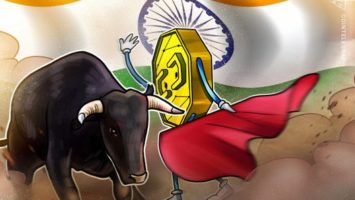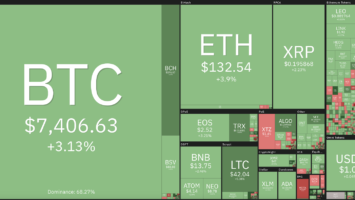India’s cryptocurrency ecosystem has been in limbo since the country’s central bank barred banks from dealing with cryptocurrency exchanges in 2018. As of March 4, the Supreme Court of India has done away with those restrictions on crypto, allowing the second-most populous country — and the most populous democracy — a path to digital-currency freedom. The lifting of the ban by the Supreme Court will open new opportunities for India in terms of investments, the economy and the market as a whole.
After the Reserve Bank of India restricted financial institutions from dealing with cryptocurrency, trade volumes fell significantly overnight. Some, such as BitTorrent creator Bram Cohen, believe this action created a lot of fear, uncertainty and doubt. Because the average person did not have sufficient knowledge to start trading with alternative platforms other than peer-to-peer exchanges, the Indian population wound up becoming a leader in P2P trading.
Related: India Back in the Race: Landmark Judgment to Fuel Crypto Adoption
According to recent data from Paxful, the people of India’s sentiment around digital currency prior to the lifting of the ban was quite contrary to that of their government. Trade volume on the peer-to-peer marketplace in January was over $3 million, while the number of transactions came in at over 23,500, representing an 11% month-over-month increase. The Indian people also highly favor bank transfers as a payment method, with over 76% of trades having occurred that way. A sizable amount of trades also took place with other methods based on the Unified Payments Interface system.
Related: Supreme Court Post-Game: It’s a ‘Historic Day’ for Crypto in India
The high use of digital currency, despite the lack of support from the government and national banking, shows that the people of India appreciate the benefits of cryptocurrency and desire additional resources that will bring them financial freedom. Now that the ban has been lifted, we can assume that, with the right support from the government and proper safeguards in place for the country’s 1.3 billion people, India holds the potential to become a crypto superpower.
So, where does the potential to lead the peer-to-peer revolution come from, and why India?
India has a population of over 1 billion people and already leads in traditional peer-to-peer lending that connects investors or lenders looking for high returns to creditworthy borrowers looking for short-term personal loans. The Indian population is quite familiar with operations that involve relying on your peers to drive financial inclusion and financial freedom. The inclusion provided by cryptocurrency will allow them to take that to the next level. Not to mention, the adoption of blockchain across India’s service sectors, such as banking, financial services, retail, supply chain and insurance industries, has the potential to add an extra $5 billion to the Indian economy.
Related: A Call for Sensible Regulation: The Fate of Future Innovation in India
With an evolving information technology sector and a service sector that is a key growth driver, India has no shortage of labor to enhance the technological advancements that go hand in hand with cryptocurrency and blockchain. There is no shortage of citizens that would be interested in participating in that future.
With cryptocurrency, India has the opportunity to secure foreign investment, create thousands of high-paying jobs and work toward a stronger, safer, digitized India.
The views, thoughts and opinions expressed here are the author’s alone and do not necessarily reflect or represent the views and opinions of Cointelegraph.
Ray Youssef is the CEO and co-founder of Paxful Inc., one of the world’s leading peer-to-peer Bitcoin marketplaces. Paxful gives people a simple, fair and secure avenue for trading Bitcoin, with over 300 payment methods accepted on the platform. Aside from making cryptocurrencies accessible, Ray also launched the BuiltWithBitcoin charitable initiative that aims to show the humanitarian capabilities of Bitcoin.




Comments (No)